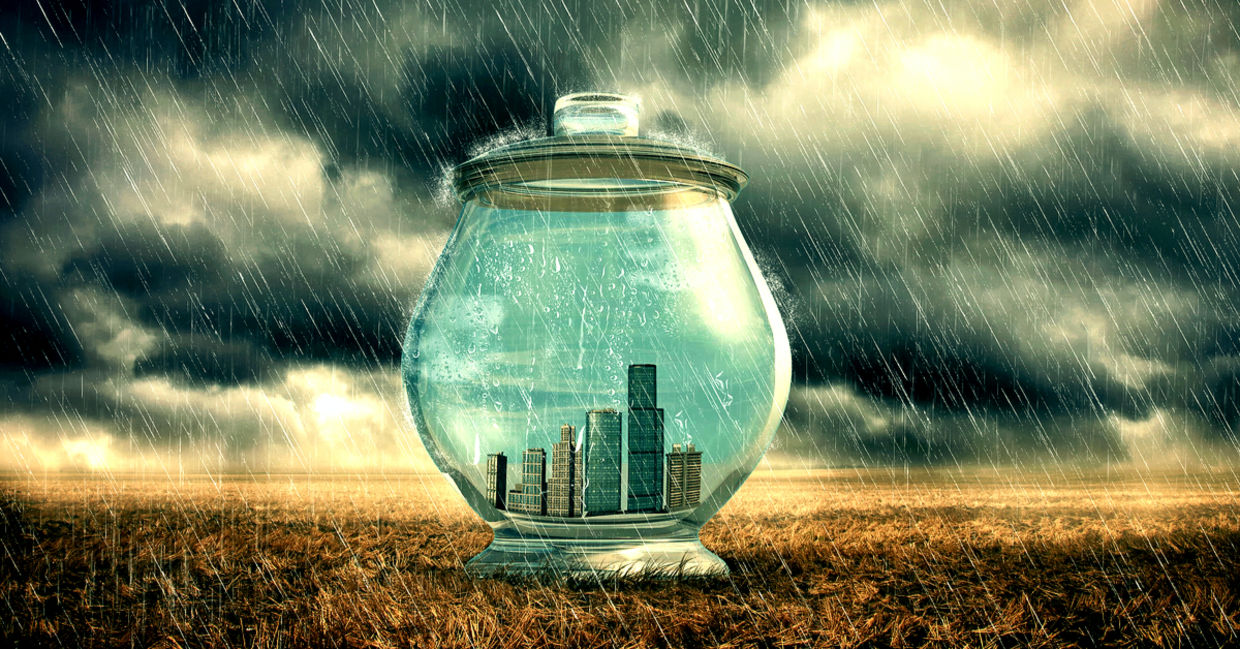
(Alberto Andrei Rosu / Shutterstock.com)
Rain is essential to life, but lately, the rainy season has been overwhelming in many parts of the world. This rainy reality has made city engineers, planners and officials look for ways to reconstruct their cities to better handle the next downpour and The New York Times reveals that cities around the world are using the rain to make sustainable changes.
Warmer temperatures cause heavier rainfall
Climate change is making rain heavier and more frequent, according to the US Environmental Protection Agency (EPA). That's because ocean water evaporates more at warmer temperatures, leading to increased precipitation in clouds. When clouds move over land, this means heavier rains or snowstorms in the winter.
Cities experiencing these torrential rains however, are not always equipped to deal with the downpours. Flooding occurs when water has nowhere to go, and city streets laden with concrete are keeping the water from running off. Concrete can’t absorb water and therefore prevents water from making its way underground where it can be collected for reuse. Instead, rainwater overflows into the streets often causing flooding.
Nature as a guide to redesigning greener cities
To defeat the flooding, several cities have already implemented plans for greener solutions, according to the New York Times article, and they are looking at nature for guidance. Officials and engineers are mimicking the way that nature soaks up rainwater in their redesigns for their cities to take in more water.
Biomimicry is the design and production of materials that mimic entities and processes in nature, and is why cities are rethinking their concrete and metal infrastructures into more natural materials. Sponges, trees, and plants naturally soak in water and have mechanisms for water reuse. That’s why cities are turning their towns into “sponge cities” to protect them from rainwater flooding.
View this post on Instagram
Sponge cities are sprouting across the globe
Sponge cities are designed to absorb rainwater by ensuring that it falls through sustainable drainage systems and on water-loving trees and plants, according to ArchDaily.
Regions like Wuhan and Beijing in China, where population and construction continue to increase each year, are accustomed to heavy rains during monsoon season. In 2015, the Chinese Government announced plans to transform the nation into a sponge country by 2030, as reported in China Daily.
View this post on Instagram
Yu Kongjian, a Chinese landscape architect, became deeply frustrated after Beijing's unpreparedness during the great storm that overwhelmed the city in 2012. He became inspired to take the lead to transform Beijing into a sponge city, reveals the Guardian. His firm, Turenscape, is now leading China’s “Slow Water” movement to redesign cities with greener elements and permeable materials to accept natural water flows.
Rain gardens, green roofs and community efforts
In New Orleans, a Louisiana city accustomed to hurricanes and rainy weather, the city is using trees, plants and green rooftops to curb rainwater, according to nonprofit news media The Grist. These “rain gardens” are being created in pockets across the city, like in parking lots and along street pavements, in order to soak up rainwater as it falls from the sky.
However, as much as the city plans for redesign, it needs the participation of its dwellers. In 2011, Philadelphia began its “Green City, Clean Waters” initiative to reduce the city’s 13 billion gallons of rainwater runoff. Philadelphians got to work and have since transformed 2,200 acres of their homes and streets into greener infrastructures, by making community rain gardens. The community-wide effort combined with city planning has already successfully reduced runoff by three billion gallons, according to the New York Times.
While heavy rains are still predicted in the upcoming forecasts, ways of making cities suitable for heavy precipitation can be made ready too, and cities with the help of their citizens are setting the example around the world.
YOU MIGHT ALSO LIKE:
Meet the Startup With an Ingenious, Global Solution
Las Vegas May be First US City to Replace Decorative Grass
This Innovation Could Make Everyday Objects Unbreakable!







